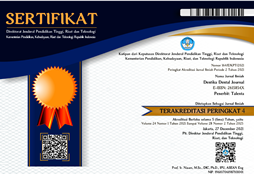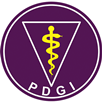RELATIONSHIP OF SALIVARY PEROXIDASE ACTIVITY TO CD4+ LEVEL IN HIV/AIDS PATIENTS
HUBUNGAN AKTIVITAS PEROKSIDASE SALIVA TERHADAP TINGKAT CD4 PASIEN HIV/AIDS
DOI:
https://doi.org/10.32734/dentika.v16i1.1904Keywords:
salivary peroxidase activity, HIV/AIDSAbstract
Human whole saliva contains peroxidases (human peroxidase and myeloperoxidase) which are part of the innate host
defence mechanism in oral cavity. The primary function is to catalyse the oxidation of thyocyanate, in the presence of
hydrogen peroxidase, that resulting in the end product of wide antimicrobial activity. Patient with HIV/AIDS is often
decreased in salivary flow rate, and this condition may also change the salivary composisition. These changes are
contributed in oral lesions of HIV/AIDS patients. The aim of this study was to evaluate the salivary peroxidase activities
of HIV/AIDS patients. The study involved 98 patients with HIV/AIDS of whom 55 were men and 43 were women.
Unstimulated whole saliva was collected and all the patients received a complete oral examination. The saliva samples
were analysed with Bradford assay (with Bradford reagent) and salivary peroxidase measurement with microplate reader
and read at 450 nm wave length. The results showed that the mean concentration of total salivary protein and peroxidase
in this study population was 1169µg/ml (SD±186.1) and 6.101unit/mg Protein (SD±1.26) respectively. It showed a
tendency that the lower the CD4 level, the higher the total protein concentration as well as salivary peroxidase activity,
however the difference was not statistically significant (p>0.05). Patients’ data on age, sex, salivary flow rate and pH did
not significantly influencing the total salivary protein concentration as well as the peroxidase activity (p>0.05). This study
showed that salivary peroxidase activity have a correlation with the total salivary protein concentration. There was a
tendency of higher total protein concentration and salivary peroxidase activity found in patients with lower CD4 counts
but in those with more acidic saliva. In conclusion, salivary peroxidase activity have a correlation with the total salivary
protein concentration in HIV/AIDS patients.















